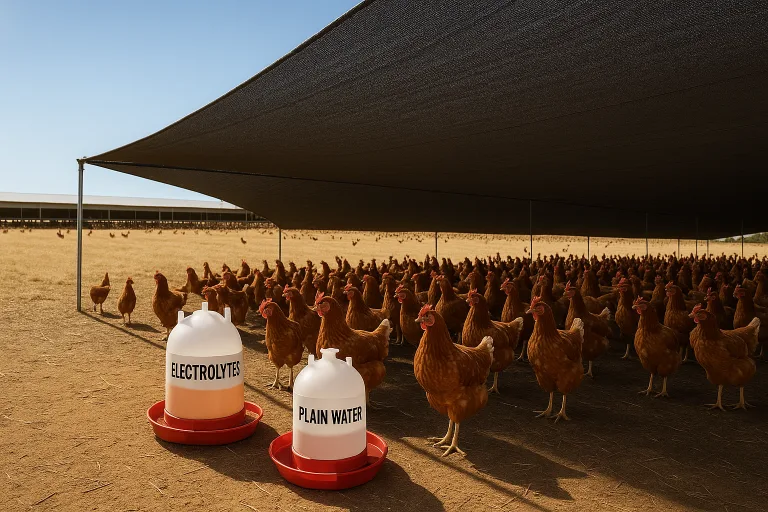Boost Your Profits With Improved Feed Conversion
Maximizing profits is paramount. One key area that can significantly impact the bottom line is feed conversion efficiency (FCE). By improving FCE, farmers can achieve greater returns on their investment and enhance the sustainability of their operations.
But what exactly is FCE, and how can it be optimized? In this discussion, we will explore the importance of improved feed conversion for profitability, delve into the factors that affect FCE in layers, and uncover strategies that can help boost your profits by enhancing feed conversion efficiency.
Get ready to discover the secrets to maximizing your returns while ensuring the welfare and productivity of your flock.
Understanding Feed Conversion Efficiency (FCE)
Understanding the intricacies of Feed Conversion Efficiency (FCE) is crucial in comprehending the effectiveness of layers in transforming feed into eggs. FCE is a metric that quantifies the efficiency of feed utilization by layers and is expressed as a ratio of feed to eggs or egg weight.
Calculating FCE ratios allows for a quantitative assessment of the amount of feed required to produce a dozen eggs. To evaluate FCE benchmarks, it is important to consider factors such as breed and genetic composition of layers, as they influence the conversion rates.
Additionally, providing a balanced and nutritionally rich diet, implementing proper disease management and vaccination protocols, and optimizing environmental conditions all affect FCE.
Understanding and improving FCE is essential for maximizing profits and reducing production costs in layer farming.
Importance of Improved FCE for Profits
Enhancing feed conversion efficiency (FCE) is crucial for maximizing profits and reducing production costs in the layer farming industry. A high FCE allows for the maximization of egg production while minimizing the amount of feed required. By improving FCE, producers can reduce production costs by optimizing the utilization of resources, such as feed and labor.
This is particularly important in the layer farming industry, where feed costs constitute a significant portion of the overall expenses. Furthermore, a superior FCE can lead to increased profitability by generating more eggs from the same volume of feed.
Therefore, implementing strategies to improve FCE is essential for achieving economic success in layer farming, as it directly impacts the reduction of production costs and the maximization of egg production.
Factors Affecting Feed Conversion in Layers
Several factors can influence the feed conversion efficiency (FCE) in layers. These include breed and genetic composition, diet quality, disease management, and environmental conditions.
Providing a balanced diet is crucial for optimal FCE. It ensures that layers receive the necessary nutrients for efficient egg production.
Disease management is also essential for maintaining good FCE. Diseases can negatively impact the health of layers, leading to reduced feed intake and lower egg production. Vaccination protocols and effective disease prevention strategies help maintain the health of layers, improving their FCE.
Additionally, environmental conditions such as temperature and humidity can affect FCE. Layers perform best in environments with adequate ventilation and optimal temperature control.
Strategies for Enhancing Feed Conversion Efficiency
To optimize feed conversion efficiency in layer farming, a comprehensive approach is required. This approach should incorporate strategies that focus on feed quality, breed selection, health management, environmental control, and meticulous record-keeping.
Reducing feed wastage is a crucial aspect of enhancing feed conversion efficiency. Implementing measures such as using feeders and drinkers that minimize spillage, providing appropriate feeding space per bird, and conducting regular inspections to identify and address potential sources of feed wastage can significantly improve conversion rates.
Another important strategy is implementing vaccination programs to ensure the health of layers. Vaccinations help prevent diseases that can negatively impact feed intake and digestion, leading to poor conversion rates.
Benefits of Optimizing Feed Conversion Efficiency
Optimizing feed conversion efficiency in layer farming not only leads to reduced production costs and increased profitability but also contributes to overall farm sustainability and long-term economic success. Improved feed conversion efficiency brings several benefits to layer farming:
- Reduced production costs: By optimizing feed conversion efficiency, farmers can minimize the amount of feed required to produce eggs. This leads to significant savings in feed costs, which is one of the major expenses in layer farming.
- Increased profitability: With reduced production costs, farmers can improve their profit margins. By achieving a superior conversion rate, more eggs can be obtained from the same volume of feed, resulting in higher revenue.
- Improved egg quality: Optimizing feed conversion efficiency ensures that layers receive a balanced and nutritionally rich diet. This, in turn, enhances the quality of the eggs produced, making them more appealing to consumers.
- Farm sustainability: Efficient feed conversion reduces the environmental impact of layer farming by minimizing feed wastage. It also promotes sustainable practices by conserving resources and reducing the carbon footprint of the farm.
Investing in High-Quality Feed
Investing in high-quality feed is a fundamental aspect of improving feed conversion efficiency in layer farming. High-quality feed plays a crucial role in reducing feed wastage and optimizing nutrient content, both of which are essential for maximizing feed conversion rates. When investing in feed, it is important to consider its nutritional value and composition, ensuring that it meets the specific requirements of the layers.
By providing a balanced and nutritionally rich diet, layers can efficiently convert feed into eggs. Furthermore, reducing feed wastage through proper storage and feeding practices can significantly improve feed conversion efficiency.
Investing in high-quality feed not only enhances the overall health and productivity of the layers but also has a direct impact on the profitability of the farm.
Selecting Superior Layer Breeds
Choosing the most suitable layer breeds based on their genetic traits and conversion rates is a critical factor in optimizing feed conversion efficiency in layer farming. The challenges in breed selection and the impact of genetic composition play a significant role in determining the overall performance of layers.
To emphasize the importance of selecting superior layer breeds, consider the following points:
- Genetic potential: Different breeds possess varying genetic potentials for feed conversion efficiency. It is crucial to choose breeds known for their superior conversion rates to maximize productivity and profitability.
- Disease resistance: Some layer breeds exhibit better resistance to common diseases, reducing the need for excessive medication and potential negative impacts on feed conversion efficiency.
- Egg quality: Certain breeds are genetically predisposed to produce eggs with superior quality attributes, such as shell strength and yolk color. This can increase market value and consumer satisfaction.
- Environmental adaptability: Breeds that are well-suited to the local environment can withstand temperature fluctuations, humidity levels, and other environmental factors, ensuring optimal performance and feed conversion efficiency.
Conclusion
In conclusion, optimizing feed conversion efficiency is crucial for the profitability of layer farming.
By investing in high-quality feed, selecting superior layer breeds, implementing robust health management programs, creating optimal environmental conditions, and maintaining meticulous record-keeping, farmers can enhance their FCE and achieve higher profits.
Improving FCE not only benefits individual farmers but also contributes to the overall sustainability of layer farms.


